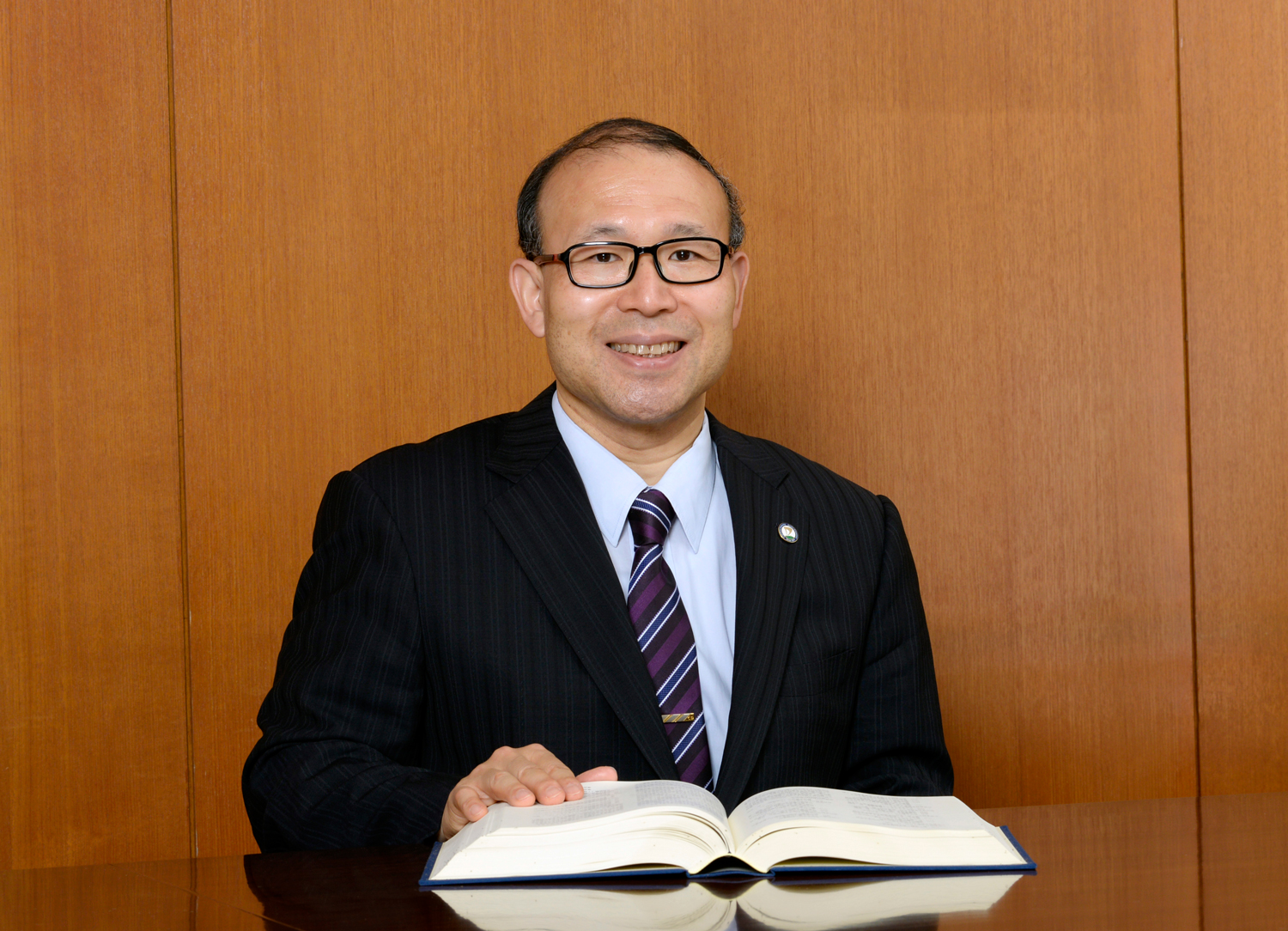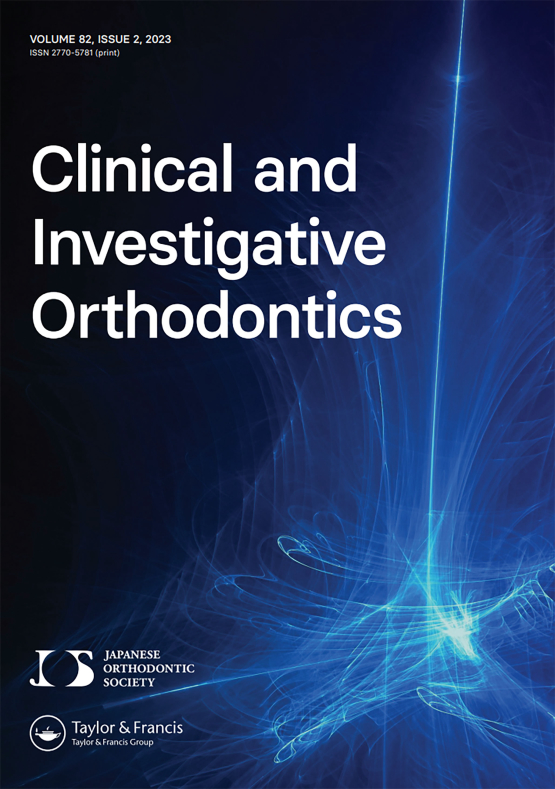Meet the Editor-in-Chief:
Professor Shouichi Miyawaki
The Meet the Editor series features interviews with editors. In this installment, we speak to Professor Shouichi Miyawaki, Editor-in-Chief of Clinical and Investigative Orthodontics journal. Having previously worked at Osaka University, Nara Medical University, the Université de Montréal, and Okayama University, Professor Miyawaki currently works at Kagoshima University where he undertakes advanced research in the area where dentistry and gastroenterology overlap, as well as in the field of orthodontics.
His research achievements include becoming the first in the world to demonstrate the relation between sleep bruxism and gastroesophageal reflux through experiments, and in his research into temporary anchorage devices (TADs) where his 2003 paper (Miyawaki et al, AJO/DO) ranked among the top 1% of papers in terms of citations. In his career at Kagoshima University, he was Dean of the Faculty of Dentistry and now serves as chair of the Kyushu Orthodontic Society. He is also Director of the Japanese Orthodontic Society and the Japanese Cleft Palate Association.
日本語版のインタビューはこちらから。
Can you introduce yourself, give us a brief description about who you are, and where you are based in the world.
After graduating from Osaka University’s School of Dentistry in 1989, I continued my studies to do a postgraduate orthodontics course at the same university and obtained a doctorate in dentistry in 1994. Since then, I have been involved in education, research, practice, and other aspects of orthodontics through my appointments as an assistant in the field of oral and maxillofacial surgery at Nara Medical University in 1997; a lecturer at the Okayama University Hospital Orthodontic Clinic in 1999; a visiting researcher at Université de Montréal’s Faculty of Dentistry in 2001; an Associate Professor at Okayama University in April 2005, and finally as Head Professor of Orthodontics and Dentofacial Orthopedics at Kagoshima University’s Graduate School of Medical and Dental Sciences.
In my work as an educator at Kagoshima University, I have supervised more than 30 medical students as they successfully completed their doctorates and became certified physicians, with two of them becoming professors. I undertake research into TADs and bruxism and was the lead author of an original paper on TADs in 2003 that ended up in the top 1% of most cited papers, while also being the first in the world to report the relationship between bruxism and gastroesophageal reflux. When it comes to clinical work, in addition to these fields, I am proactively involved in the treatment of cleft lip and palate.
I have been the Editor-in-Chief of the Japan Orthodontic Society journal since 2014. Recently in June 2023, the journal was given an impact factor for the first time in about 100 years of its history. Going forward, I hope to continue building the presence of this journal.

In a few sentences, please describe the focus of your work.
With regards to education, I hope to produce many top regional practitioners as well as professors who can contribute to the development of the field of orthodontics by continuing to mentor orthodontists and researchers to be able to apply their trade in Japan and globally.
In terms of research and clinical work, my career started with research into the oral and maxillofacial function of cleft lip and palate patients before going on to focus on research about temporomandibular joint dysfunction, sleep bruxism, and TADs. Moving forward I hope to work on the development of new medical devices that will be beneficial in treatment with TADs and on research in areas where dentistry and gastroenterology overlap.
With regards to Clinical and Investigative Orthodontics, I aim to have it included in PubMed or Medline in the near future to further increase the journal’s impact factor and contributions internationally.

What lead you to become the Editor-in-Chief of Clinical and Investigative Orthodontics, and could you briefly share what your day-to-day role as an editor entails?
It started when I became an Editorial Manager under mentor and former Editor-in-Chief of Clinical and Investigative Orthodontics, Teruko Yamamoto. Other factors that led me to becoming Editor-in-Chief included working as a member of the editorial board under other previous Editors-in-Chief, namely Kenji Takada as well as Junichiro Iida, and Isao Saito. Not to mention the generous support of Hiroyuki Ishikawa and the other chairs of the Japan Orthodontic Society over the years, I was eventually assumed the role of Editor-in-Chief in 2014 to this day.
As Editor-in-Chief, I undertake editorial work with the cooperation of editorial managers (Aya Maeda-Iino and Yasuhiko Oga) and the Taylor & Francis team. I undertake peer reviews with the cooperation of the members of the editorial board and strive to ensure the journal features papers of a high quality. I also come up with ideas to ensure peer reviews proceed smoothly, such as sending annual thank-you letters to reviewers who undertake many peer reviews for the journal.
Clinical and Investigative Orthodontics is a Diamond Open Access journal. Can you elaborate on the journal’s vision for promoting open access publishing in the field of orthodontics, and how it can benefit researchers, dentists, and other healthcare professionals?
By making this journal Diamond Open Access, Japan Orthodontic Society allows everyone around the world to disseminate academic information equally without being affected by their economic circumstances, and everyone is now able to read all papers free of charge. The aim of the Japan Orthodontic Society is to further advance the field of orthodontics. I believe that such international contributions can provide a good research environment for researchers, dentists, and other medical professionals even in less economically well-off countries.
The Journal of Clinical and Investigative Orthodontics covers a broad range of orthodontics and dentofacial orthopedics research. What are your thoughts on the future directions of this field, and how can the journal play a role in advancing these developments?
Orthodontics is a field of dentistry related to many other fields. As such, I feel that at present, for orthodontics to keep making progress, it is very important not to limit fields from which we publish papers, and to publish papers from a wide range of fields.
Therefore, as this journal is a Diamond Open Access journal, papers are published regardless of the economic circumstances of researchers and can be accessed to readers at no cost, I believe it will make a significant contribution to the advancement of orthodontics going forward.
Dissemination of research is key for early-career researchers to build their reputation. What advice do you have for young researchers looking to gain visibility and recognition for their work?
We have seen the recent emergence of predatory journals and similar journals that do not perform sufficient peer reviews. They are often open access journals and sometimes have a high impact factor. Our journal was given an impact factor in 2022 and only became an open access journal in 2023, but it also has a long history that stretches back to 1926 (or 1998 if we are talking about the English version), so you can submit papers to us with peace of mind.
In addition to the Japan Orthodontic Society being its sponsor and with zero article processing charge (APC), it is also a long-established journal. It is anticipated that the journal impact factor and the number of papers it publishes will increase. Hence, I very much look forward to seeing your papers in our journal.

About the Journal
Clinical and Investigative Orthodontics is a Diamond model open access journal (APC is free of charge) and we welcome high quality orthodontic research papers and reviews from around the world.
Clinical and Investigative Orthodontics is the official journal of the Japanese Orthodontic Society (JOS), inheriting the history of Journal of Japan Orthodontic Society established in 1932. This journal aims to provide a high level of orthodontic research discoveries which facilitates researchers, dentists, and other health professionals from Asia and the entire world. Clinical and Investigative Orthodontics publishes Original articles and Review articles.


